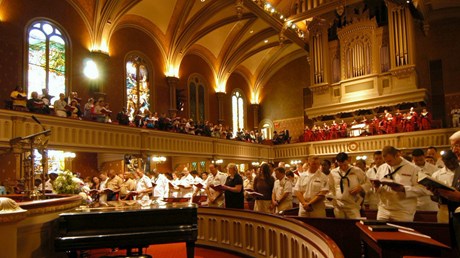Whether large or small, congregations of different sizes offer both challenges and blessings to all involved.

The title to this article is a trick question, of course. The “ideal size” when it comes to churches is whatever God calls you to be. That said, whether large or small, congregations of different sizes offer both challenges and blessings to all involved. Being aware of these strengths and weaknesses is more important to the health of churches than one might initially realize.
Although we may not always think about it, our physical spaces can have a significant impact on the ministries in our churches. However, if we are aware of the strengths and challenges that come with our church sizes, then we will be more likely to intentionally plan to address areas of weakness and play our strengths to their fullest potential.
Large churches have their own set of challenges and blessings. When it comes to physical size, for instance, when your church building is large, you may often have large spaces that are blocked off. This can send a message that you are not filling up the building that you do have. For some people, this can be demoralizing.
A large church building also limits your options as far as worship times and spaces. If you have many empty seats every Sunday, you cannot go to two services. Your congregation would need to be very large in order to fill such a large space twice a Sunday. You also cannot go to a multi-site model. After all, why would you build another location when you have so much open space?
The statement “we’re not even filling up the building that we have” can be demoralizing, it can also be motivating. Having a church building with empty seats can increase the urgency with which people share the gospel; after all, it is a consistent reminder that there is work to be done. (In ...
from
http://feeds.christianitytoday.com/~r/christianitytoday/ctmag/~3/tNvJLC85GYM/large-or-small-what-is-ideal-church-size-anyways.html
No comments:
Post a Comment